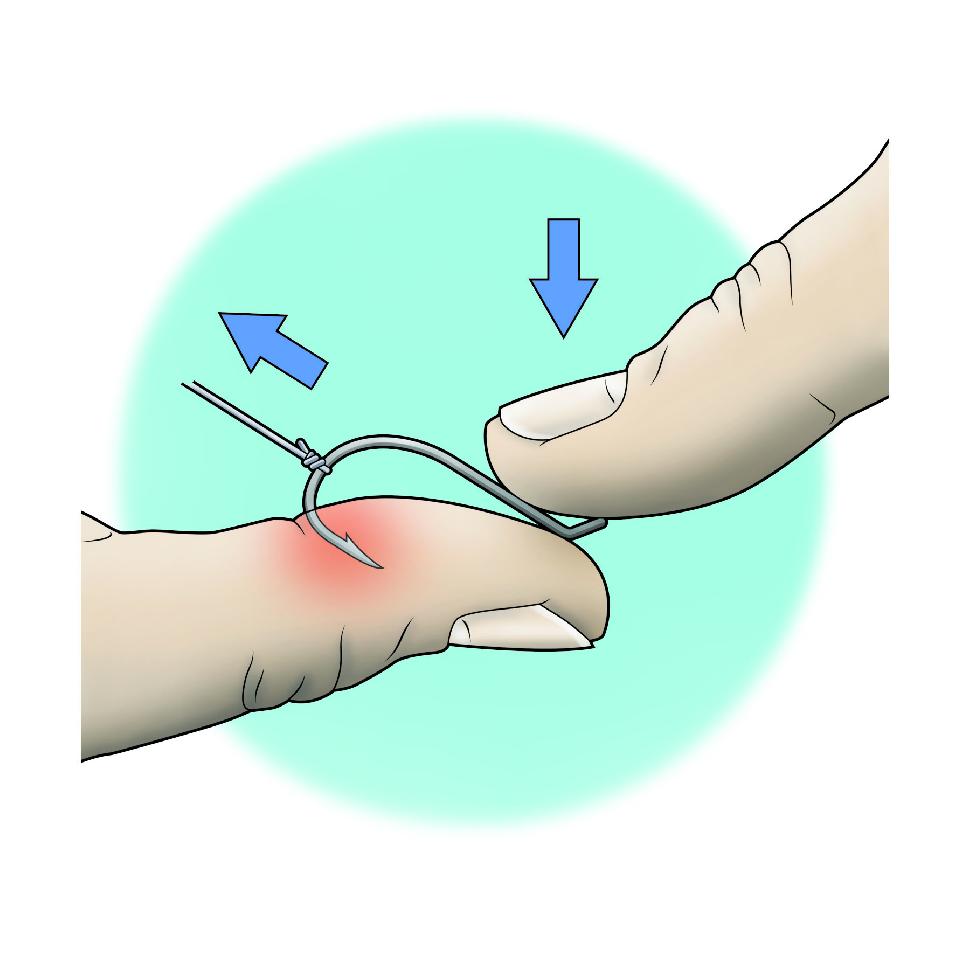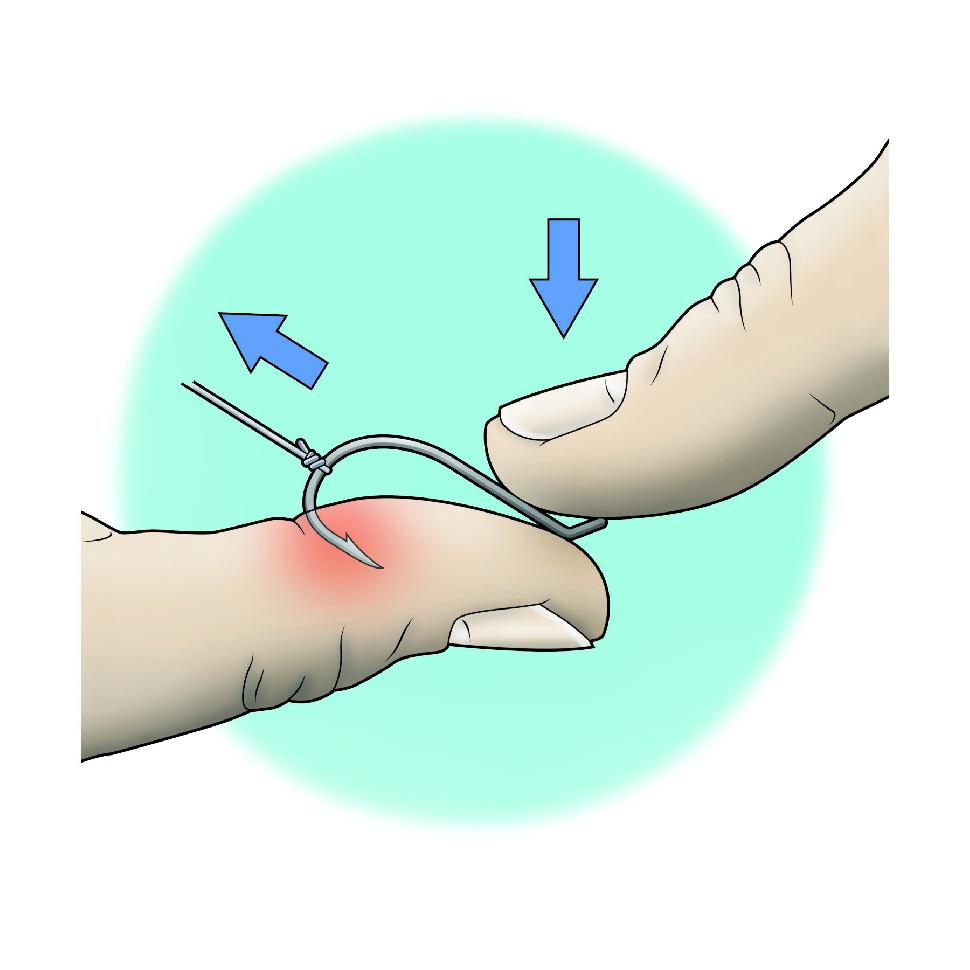Hooked yourself?
Two tried-and-true techniques for removing a hook from your flesh
Advertisement
The first time it happened to me I was trying to extract a Rapala from a pike. The fish suddenly convulsed and slipped through my hand, embedding one of the trebles in the thick muscle between my thumb and forefinger. And there the pike hung, thrashing wildly and driving the barb further into my flesh while my wife and canoe partner helped by yelling “Ooh, gross!”
I say the first time, because I’ve driven hooks into myself (and, sadly, others) a few more times since. Hey, if you fish long enough, you, too, will one day face having to remove fish hooks from human tissue. There are a couple of ways to proceed.
Advertisement
Through-and-through
In the case of my pike mishap, I eventually corralled and released the fish, then used the wire cutter on my multi-tool to snip the offending treblehook off the lure. With the lure out of the way, I cut the embedded hook at the shank, leaving a single shard of curved steel sticking out of my hand.
Gripping the shard with the multi-tool pliers, I forced the barbed point to continue on its way, up and out through the skin, much as a doctor uses a curved needle to suture wounds. Once the point was sticking out, I grabbed it with the pliers and yanked the hook free.
I’ve since used this method two or three more times—including removing an errant fly from the wattles of an old man—and found it satisfactory.
Advertisement
String-and-yank
There’s perhaps an easier way to remove barbed hooks, however, especially if the point of the hook is embedded near bone, making the suture method difficult or impossible.
Take a piece of string or heavy-test fishing line and wrap it around the curve of the embedded hook. With your thumb, push down on the eye of the hook until it’s lying flat against the skin, then give a sharp yank on the string, pulling in the opposite direction the hook went in. The hook should pop out with minimal tearing of the flesh. (See diagram below.)
My buddy Donald Thom, current World Fly Fishing Championship silver medalist, has used this technique several times, with good results.
Which one do I use?
It really depends on the situation. The through-and-through suture technique is great for small hooks and loose skin (say, the wattles of an old man); the string-and-yank method, meanwhile, is perhaps better for larger hooks or those embedded near bone. There is, of course, a third option, which is to go barbless: it’s a lot easier on the fish and, in the event of mishaps, a lot easier on you.
Or your fishing buddies.


